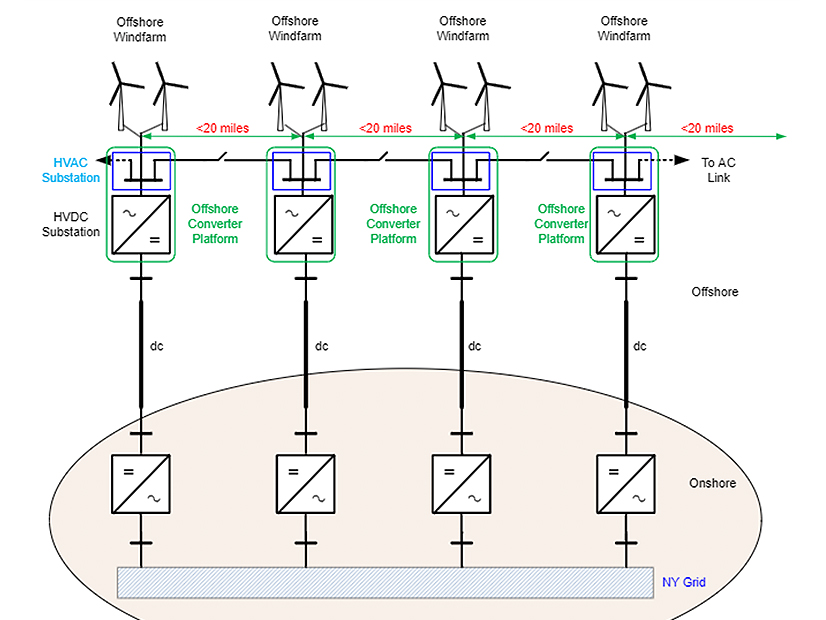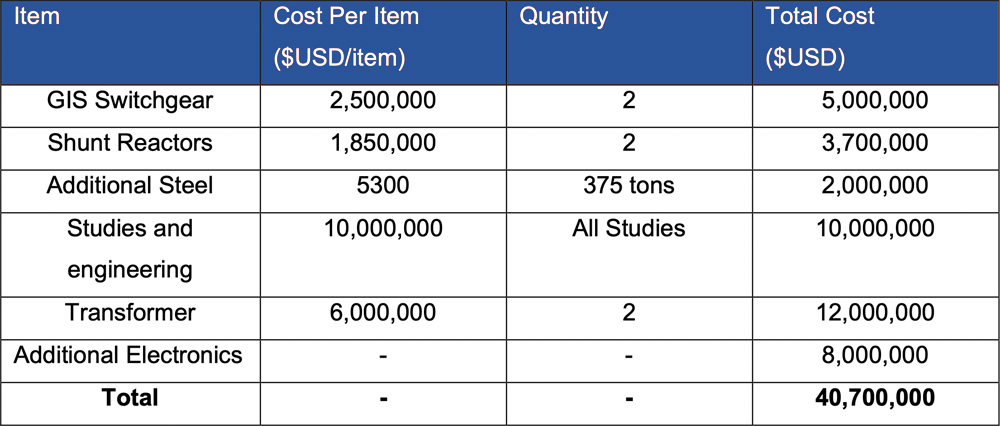
The New York Public Service Commission on Thursday unanimously approved requiring offshore wind project developers to provide “mesh-ready” transmission plans in their bids for state solicitations, as recommended by the commission’s power grid study a year ago (Case Nos. 15-E-0302; 18-E-0071; 20-E-0197).
The commission’s order seeks detailed plans from Con Edison for a wind energy interconnection hub, particularly on the availability of points of interconnection in lower Manhattan for up to 6 GW of offshore injections.
“The order will complete the requirements established by the Accelerated Renewable Energy Growth and Community Benefit Act of 2020 and ultimately improve the utility of the state’s entire renewable energy portfolio,” said PSC Chair Rory Christian.
OSW proposals that integrate energy storage will receive extra scoring weight under the order, and a new technology working group will test and deploy advanced transmission technologies. The PSC scheduled a virtual technical conference on Jan. 27 for utilities to present an overview of the proposed coordinated grid planning process.
The Initial NY Power Grid Study Report released last January by the state’s Department of Public Service and the New York State Energy Research and Development Authority (NYSERDA) recommended that transmission planners focus on beefing up the infrastructure needed to import 6 GW of offshore wind energy into New York City. (See NY Grid Study Pushes Meshed OSW Tx, Coordination.)
Details and Costs
“The power grid study suggests that constructing an offshore grid network may have significant advantages in terms of operational flexibility, reliability and ratepayer benefits,” Robert Rosenthal, general counsel to the commission, said in testimony.
Under prior orders related to offshore wind, the commission required NYSERDA solicitations to include direct or radial lines to the point of interconnection. A single radial configuration could result in the energy from the project not being deliverable with advanced system in an outage situation, he said.
By contrast, projects with a meshed grid would be connected to each other in the ocean, from which a number of transmission lines will be interconnected to the onshore grid. Rosenthal said. If one line is down, he said, the energy can be diverted to another line.
“As the power grid study recommended, the order directs that NYSERDA modify its offshore wind procurement requirements to include mesh-ready design, primarily because the cost of modifying projects on the design team is small in comparison to the cost of a future retrofit,” Rosenthal said.
In addition, the power grid study highlights the significant constraints that impact the possible undersea transmission cable routes into New York Harbor, including the anchorage areas and navigation channels that occupy an area known as the Narrows.
Coordinated state planning for the use of this corridor into New York City is critical, says the order, which directs staff to collaborate with other state agencies to develop plans for cable routing and report on their progress no later than Sept. 1.
 Mesh-ready costs for 230 kV, including transformation | NYDPS
Mesh-ready costs for 230 kV, including transformation | NYDPS
The order acknowledged a recommendation in the power grid study for interconnections to use 320 kV direct current or DC cables to maximize the capacity that can be carried through the available corridors, and it requires the use of DC transmission as part of future offshore wind solicitations.
“I will caution that we aren’t over the hump by any stretch, and in fact we’re really at the starting gate,” said Commissioner Diane X. Burman. “We still have to set up a hub, to look at siting, and we have to address the supply chain challenges.”
With all the talk of offshore wind and community solar, very little attention has been paid to the transmission needed to make new generation assets work for the grid and which will allow decarbonization to be a reality, said Commissioner John B. Howard.
On the issue of cost there are two parts: how much it actually costs to do these projects and who should pay, Howard said.
The mesh grid for offshore will be not so much a technological challenge as a bureaucratic and regulatory challenge. Making the mesh grid work along the Northeast coast will require cooperation from neighboring states as well as neighboring RTOs on cost allocations, and a large share of planning and funding will fall to the federal government, he said.
Any cost analysis should include the full amount of what it may cost to taxpayers or ratepayers, and particularly for the issues surrounding the Con Ed hub, which may incur billions of dollars in costs and trigger “well over $100 million of windfall potentially to the city of New York,” Howard said.
“We have tried to slay this dragon as best we can, but it would have been far better for all New Yorkers had these issues of transmission and system integration fees been articulated at the front end of our desire to decarbonize our system,” Howard said.

